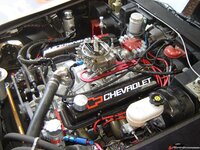If you put a filter between the pump and the rack you will be subjecting the filter to 1500 psi when you turn near full lock.
That's the whole purpose, you use the parts required to do the task, in his case/ the OP asked to protect the rack assembly. You want the contaminants trapped before the rack. BTW, the filter I linked to, is rated at 3000psi, double the relief.
You are much further ahead by placing a filter in the low pressure return line.
The oil would then be filtered after the rack, not the optimal intended protection desired.
There may be heavy duty, high pressure filters available but with a free flowing open center system, particles are going to be filtered and trapped on the lower pressure side just as easily as the high pressure side.
Open or closed system, for best filtration, the components that should be filtered directly.
As far as hydraulic systems go, 1500, is a relatively low pressure system.
With a high side filter, only the relief/flow valve, hose, fittings and filter are at risk.
With a return filter, the whole system is at risk of relief pressure with dirtier oil, including the end seals in the rack, if the filter were to be blocked, and the oem return hose won't handle that either.
It looks like TT used some rated hose to plumb his in the pic he posted.
Saginaw never was able to justify placing a filter in their power steering systems. The magnet inside the pump reservoir did a good job of picking up magnetic wear particles during the life of the car.
I can only imagine if they had installed filters. Can you imagine the warranty problems/complaints etc, let alone the added cost for the gazillions of systems they put out. I don't know of anyone that ever even changes the fluid in a PS system unless there is a failure.
Where are fuel injection filters?
Same in a small block engine, the filter is before the components that need protection, but it has an idiot proof feature, the bypass.
In all likelyhood, 69427 is probably attentive enough to not have to worry without a filter at all, and good oil, but filtration is a good thing, better in the right place.

